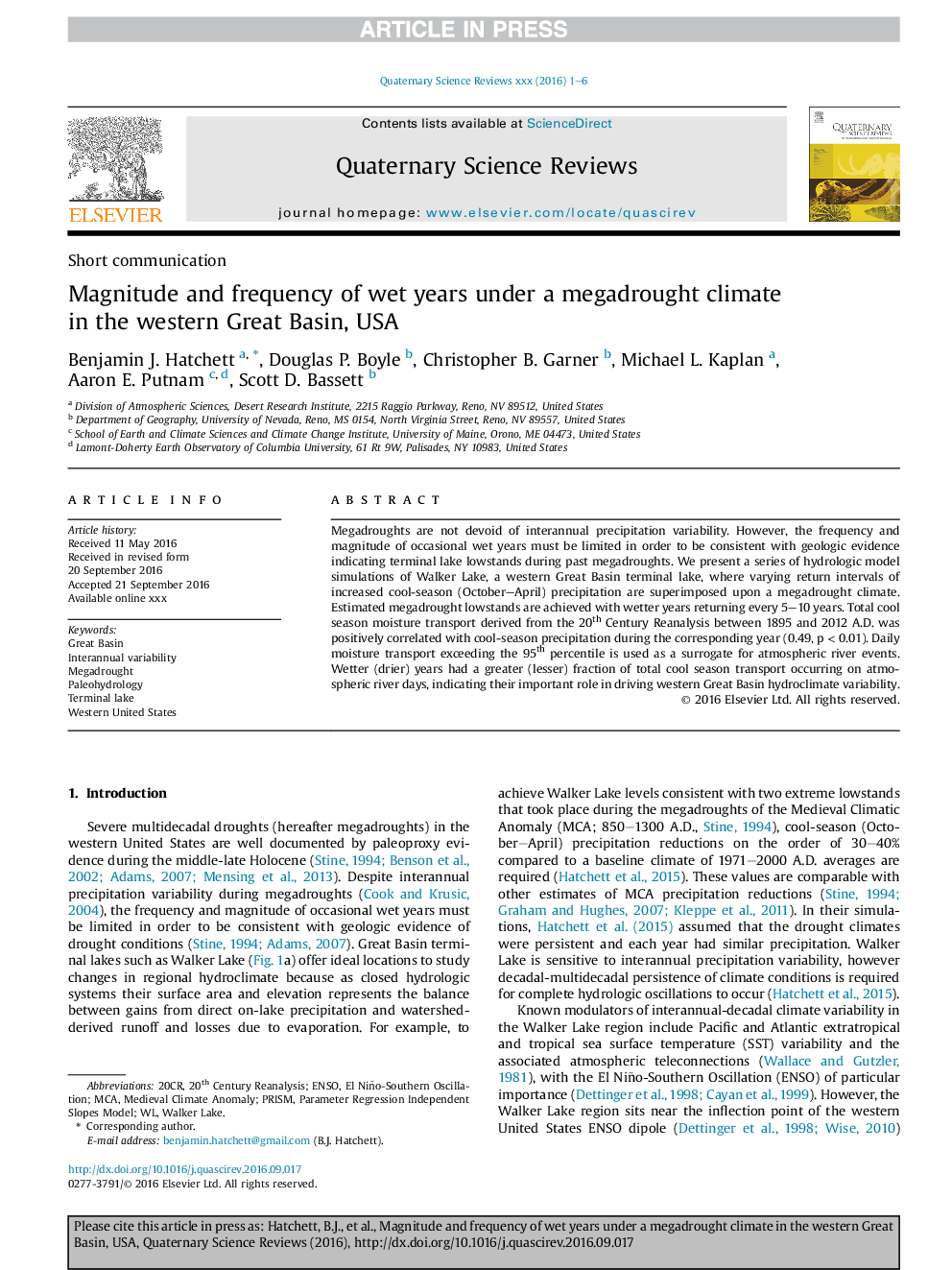| Article ID | Journal | Published Year | Pages | File Type |
|---|---|---|---|---|
| 6445905 | Quaternary Science Reviews | 2016 | 6 Pages |
Abstract
Megadroughts are not devoid of interannual precipitation variability. However, the frequency and magnitude of occasional wet years must be limited in order to be consistent with geologic evidence indicating terminal lake lowstands during past megadroughts. We present a series of hydrologic model simulations of Walker Lake, a western Great Basin terminal lake, where varying return intervals of increased cool-season (October-April) precipitation are superimposed upon a megadrought climate. Estimated megadrought lowstands are achieved with wetter years returning every 5-10 years. Total cool season moisture transport derived from the 20th Century Reanalysis between 1895 and 2012 A.D. was positively correlated with cool-season precipitation during the corresponding year (0.49, p < 0.01). Daily moisture transport exceeding the 95th percentile is used as a surrogate for atmospheric river events. Wetter (drier) years had a greater (lesser) fraction of total cool season transport occurring on atmospheric river days, indicating their important role in driving western Great Basin hydroclimate variability.
Keywords
Related Topics
Physical Sciences and Engineering
Earth and Planetary Sciences
Geology
Authors
Benjamin J. Hatchett, Douglas P. Boyle, Christopher B. Garner, Michael L. Kaplan, Aaron E. Putnam, Scott D. Bassett,
